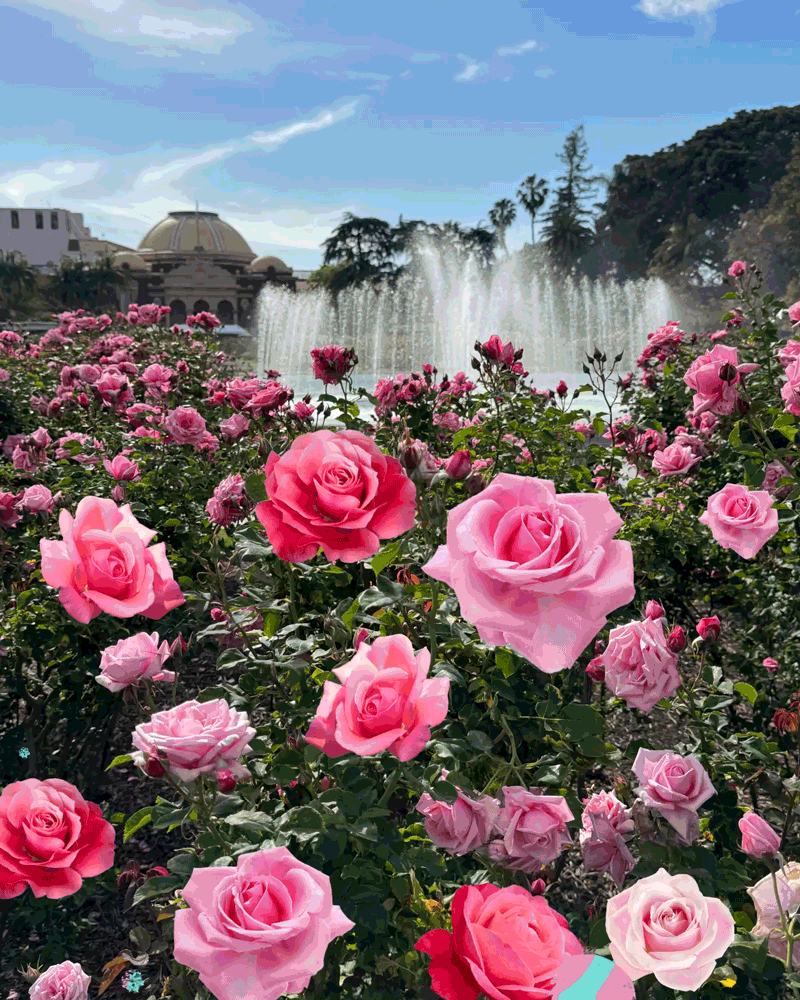Fragrant Plantings Enhance Gardens : Flowers That Make Scents
A memorable flower garden produces good scents as well as pleasing combinations of color, form and texture. Often, it’s a fragrance that remains stamped in our memories long after an experience largely passes, and scents in my garden are almost as important to me as flowers themselves.
Many of the permanent plants that provide garden fragrance are shrubs or vines to be planted now; they will be long-term investments in the garden, growing in redolence every year.
SWEET PERFUMES Gertrude Jekyll, master English gardener and designer, observed: “Perhaps the most delightful of all flower scents are those whose tender and delicate quality makes one wish for just a little more.”
Such a delicate fragrance comes from sweet olive (Osmanthus fragrans). I’ll never forget the first time I discovered sweet olive. An ambrosial fruity scent, vaguely like ripe apricots and jasmine, wafted through my campus office window on a hot and unseasonably humid September day.
My nose and I followed the scent, finally finding a large, ugly duckling shrub bearing unpretentious tiny white flowers. These inconspicuous florets, barely the size of tiny peas, were perfuming an entire courtyard. Sweet olive is indeed a fragrance you, like Jekyll, will want more of.
Away from the coast, place sweet olive in semi-shady locations; near the coast, it can tolerate full sun. Use it as a background shrub or tree, because it can reach a height of 10 feet or more.
And don’t expect it to be a beautiful addition to the landscape. My husband is, for that reason, always wanting to “shape” one of my bushy sweet olives, but I prefer it full because that means more flowers, hence more fragrance. Sweet olive blooms heavily in the spring and fall, with sporadic blooms throughout the summer.
Fruity Bush
Another sweet-smelling fruity bush is banana shrub (Michelia figo), which derives its common name from its fragrance. It is not in the banana family. Unlike sweet olives, this shrub makes a very attractive specimen plant, with glossy leaves and compact growth of 6 feet. Its creamy-yellow 1 1/2-inch flower, bordered by a maroon edging, smells tropical, like ripe bananas.
Very happy in a pot, banana shrub requires semi-shade, good soil, ample water and regular fertilization. It’s available at larger nurseries.
Other shrubs and vines notable for their subtle sweetness are solanum (purple flowers fragrant in the morning), heliotrope (4-foot shrub for partial shade), stephanotis (vine that produces white bridal bouquet flowers), genista (least aggressive of the brooms), natal plum (vigorous, undemanding shrub with white flowers followed by red fruits), honeysuckle (vines for big areas) and hybrid tea roses.
I grow roses in my garden for cutting, so I concentrate on hybrid teas. Contrary to criticism that modern roses have had the fragrance bred out of them, I’ve found many that are extraordinarily sweet.
Of the 100 or more tea roses I have cultivated, my favorites for fragrance are Mr. Lincoln (red), Gold Medal (yellow), Sweet Surrender (pink), Angel Face (lavender), Double Delight (red/white), French Lace (ivory), Mon Cheri (red/pink) and Evening Star (underrated, white available only from Jackson & Perkins).
By the way, some experts recommend fall planting of roses, if you can find the cultivars you want, because of the head start the root systems can make over spring-planted roses.
HERBAL SCENTS The foliage of many plants, while not perfuming the air, produces aromatic, balsamic scents when touched or brushed. Probably the most appealing is English lavender, the clean-smelling herb that has endeared itself to generations. Early writers declared that lavender was “good for all greefs,” and today it’s still popular in sachets, perfumes, potpourri and dried arrangements.
Best of all is the way it grows in our climate, performing splendidly with a minimum of care and water. If (or when) water becomes truly scarce and the faucets in our gardens trickle out a tiny ration, lavender is one plant that you won’t have to sacrifice. It’s particularly effective sprawling over a wall or out a planter. In nurseries, it’s most often found among the 2-inch pots of herbs; larger plants are available in one-gallon containers.
Other good garden plants with rich aromatic herbal scents are rosemary, lemon verbena, oregano, thyme and various geraniums. Although all of these plants look deceptively small in their little nursery pots, most spread out and become quite large in the garden. Allow plenty of space for them.
Although not an herb, the perennial marigold is another aromatic plant that is fragrant only when its leaves are touched. Strong and pungent, its aroma is, nevertheless, welcome in most gardens, unlike the sometimes-recommended, foul-smelling, skunky society garlic, which I have banned from my border.






